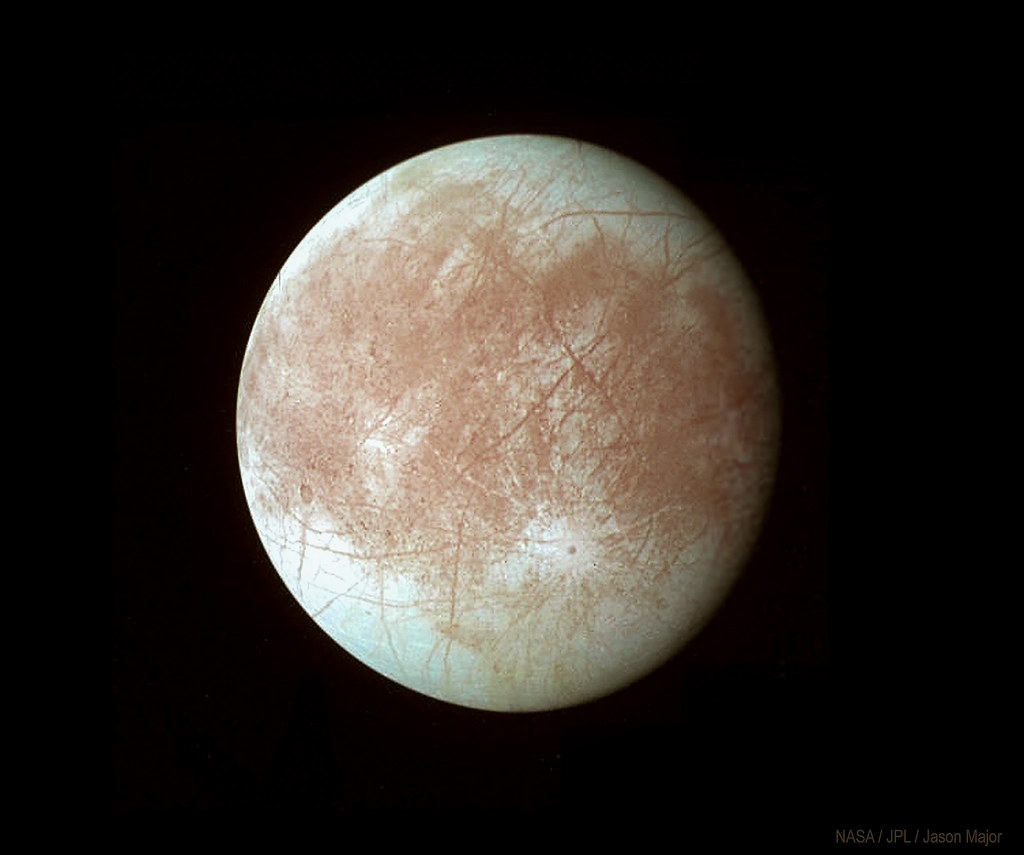Last Christmas, I received a present from my family, a book by David Attenborough titled "Living Planet, The Web of Life on Earth". The book was chosen by my granddaughter Meredith. She is in her last year of Marine Biology studies at SFU; obviously, the book relates to that.
There are a number of picture plate sections distributed throughout the book. Among them are excellent images of "black smokers", located about 3km below ocean surface, which exude hot, sulphide-laden water, and are the home of several anaerobic species (no sunlight). None-the-less, they are a form of life "as we know it"; they are still DNA-based.
A black smoker (From Wikimedia Commons, the free media repository)
Here's a quote from https://theliquidearth.org/2010/10/black-smokers: Black smokers are black chimney shaped formations that are found in large numbers in “hydrothermal vent fields” in the abyssal and hadal zones of the world’s oceans. The fields are hundreds of meters wide usually found where tectonic plates below the ocean are moving, where water seeps down into the rocks where it becomes superheated, before returning to the surface where it clouds on contact with the cold ocean water due to the abundance of dissolved minerals in it. On contact with the cold water, these minerals fall back to the ocean floor forming a chimney structure around the vent. Because of the large amount of sulphides in the superheated water, sulphide ore deposits are usually found at the base of each chimney. Water at the bottom of the ocean is only around 2oc, the water escaping the chimney of the black smoker can be as high as 400oc (end of quote).
This made me think of the efforts currently being initiated by NASA to send a probe to Europa, the second closest Galilean moon orbiting Jupiter. The name of the probe is Europa Clipper. Fly-bys by an earlier probe (called Galileo) notwithstanding, there's still relatively little known about Europa. This new, in-progress mission, NASA hopes, is going to improve our understanding of that moon. As is quite common, the underlying reason is our search for evidence of possible life elsewhere, other than on Earth. The plan is to launch the probe into space by 2024 to extensively explore Europa from space after arrival in 2031. This multi-orbit exploration will employ a number of various remote-sensing sophisticated sensors.
The moon Europa appears to be covered by a many-kilometre-thick layer of ice showing cracking ice plates on the surface. Past fly-bys detected characteristics of a deep saltwater ocean below the ice layer, exceeding the amount of water in the oceans here on Earth. A future landing probe would attempt to detect biosignatures of life (as we know it - I can't quite imagine what it would take to recognize a version we DON'T know).

Engineers and technicians unwrap and inspect the main body of NASA's Europa Clipper spacecraft after it was built and delivered by the Johns Hopkins Applied Physics Laboratory(APL) in Laurel, Maryland, to the agency's Jet Propulsion Laboratory in Southern California in early June. Credits: NASA/JPL Caltech/Johns Hopkins APL/Ed Whitman.
Jupiter's moon Europa. Image Credit: NASA/somagnews.com
At 3,120 km diameter, Europa is the smallest of the four Galilean moons (a bit smaller than our Moon). It orbits Jupiter at a distance of about 671,000 km and is in a resonance relationship with the moons Io and Ganymede. It takes two orbits for Io to go around Jupiter to one orbit for Europa, four Io orbits for one Ganymede orbit. Jupiter itself has the major gravitational effect. These various interactions create complex gravitational flexing of Europa, which is likely to create heat in Europe's interior (to some degree, other Jupiter moons are similarly affected, of course). Perhaps these effects contribute to the cracked appearance of Europa's surface; maybe black smokers exist on Europa also, along with the extremophiles which are the bacterial basis for the existence of the black smoker anaerobic species in our oceans.
Along with other moons, Europa is also subject to intense radiation which surrounds Jupiter. That situation is not beneficial for life (again, as we know it) on the surface of Europa, but might generate possibilities in the water under the ice shell (maybe turn it into beer?).
NASA has a link to detailed planned activities during a number of Europa Clipper fly-bys. Here it is: https://europa.nasa.gov/mission/about/
Looking at the Galilean moons, I'm always amazed to think that Galileo's discovery of these moons had a direct effect on, and is perhaps the actual cause of the direction our scientific and cultural evolution has taken since then... life as we know it now.


1 comment:
Thanks for the very interesting post! It definitely makes me wonder why we aren't focusing more on Europa versus Mars in our search for ET life. Assuming we do eventually find evidence of life in our solar system (outside of earth), I also wonder what impact it will have on philosophy and religion? Hopefully it'll at least spark a greater interest in critical thinking skills.
Post a Comment